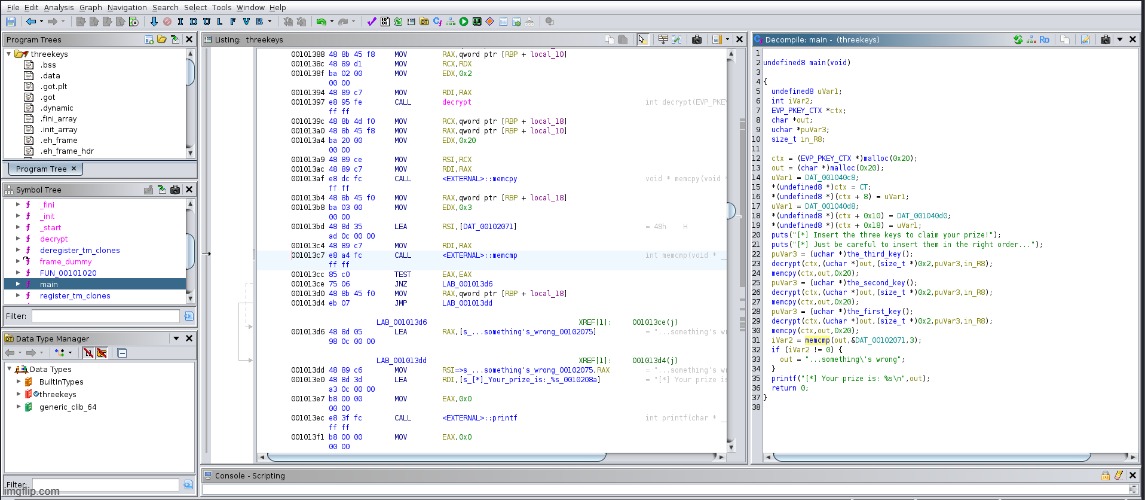
Difficulty: Easy
Description:
You need access to the Halliday Journals to gather vital info to crack the next clue. However, security has been tightened, and only VIPs with a password may enter. Can you crack the new security system?
Challenge:
The program seems to ask the user for a password, checks if it’s correct, and based on that input, either prints the flag or a message indicating tampering. The binary also includes a check to detect tracing or debugging attempts using ptrace(). However, the core challenge here is static analysis—no need for runtime debugging tricks.
Solution
Analyzing The Binary:
The main logic resides in the main() function. First, let’s look at how the password is stored and checked:
local_58[0x20] = 'S';
local_58[0x21] = 'u';
local_58[0x22] = 'p';
// continues to fill out "SuperSecretPassword-DoNotRead!"
The password is hardcoded into memory starting at local_58[0x20] and is as follows:
1
SuperSecretPassword-DoNotRead!
This is immediately revealing and indicates that the correct password is stored in the binary itself.
Extracting the Flag
Assuming the correct password is provided (SuperSecretPassword-DoNotRead!), the program enters a loop that XORs the password with a key and prints the result:
1
2
3
for (local_c = 0; local_c < 0x1d; local_c = local_c + 1) {
putchar((int)local_58[(long)(int)local_c + 0x20] ^ (uint)(byte)(&DAT_00104070)[(int)local_c]);
}
This loop iterates 29 times, XORing each character of the password with values from &DAT_00104070. To solve this statically, we can reverse this XOR operation in Ghidra or simply run the binary with the correct password to see the output.
After passing the password to the binary, we get the flag:
1
2
3
4
┌──(kali㉿kali)-[~/Desktop/rev_untraceable]
└─$ ./untraceable
What is the password to the archive? SuperSecretPassword-DoNotRead!
HTB{0ld3st_tr1ck_1n_th3_b00k}